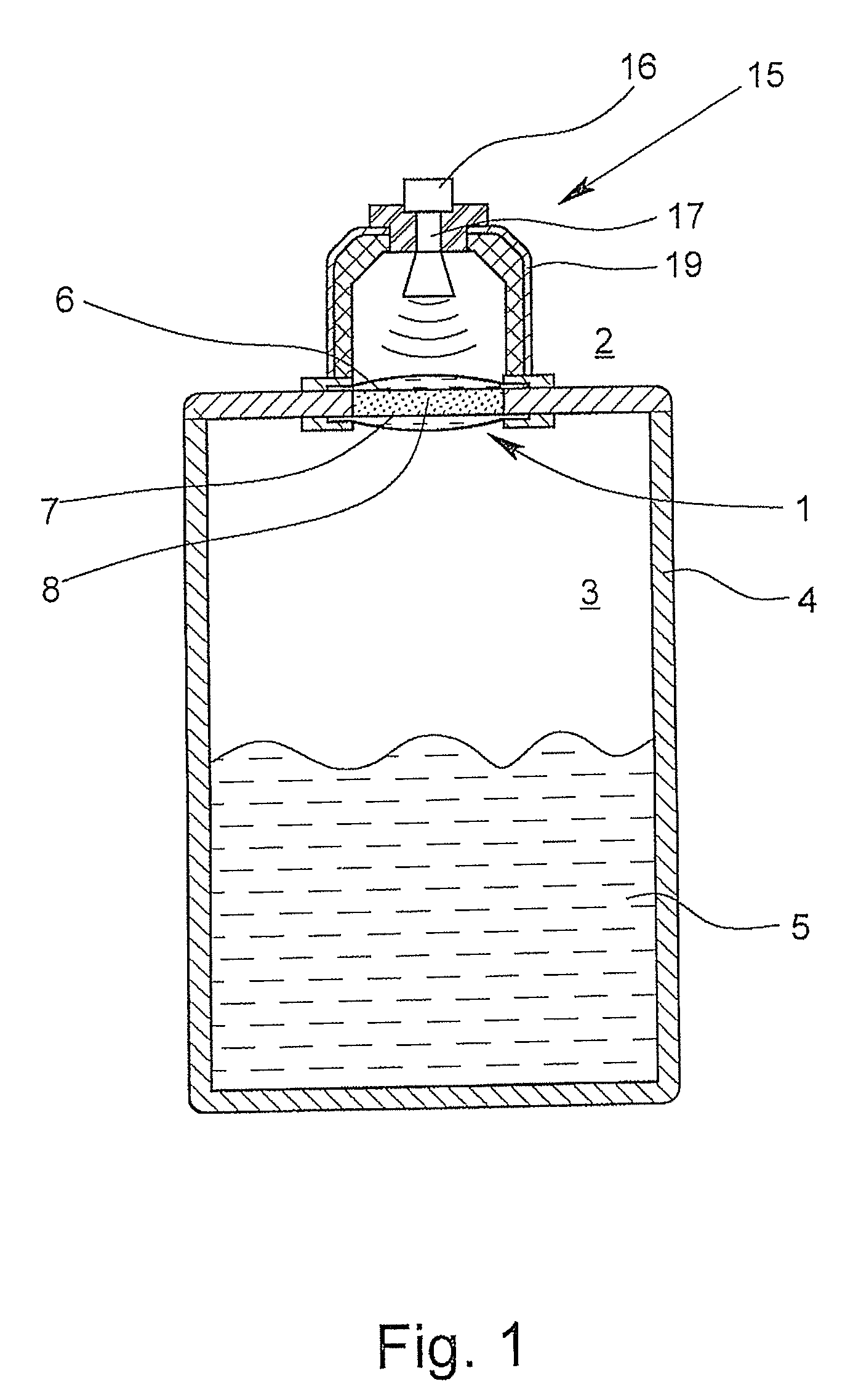Microwave window and level-measuring system that works according to the radar principle
a technology of radar principle and microwave window, applied in the field of microwave window, can solve the problems of media being aggressive and/or corrosive, and achieve the effect of reliable sealing of a process spa
- Summary
- Abstract
- Description
- Claims
- Application Information
AI Technical Summary
Benefits of technology
Problems solved by technology
Method used
Image
Examples
Embodiment Construction
[0026]FIG. 1 shows how a microwave window according to the invention is arranged between a first space 2 and a second space 3. The second space 3 is, in this case, the internal space that is encompassed by a container 4 and in which a medium 5 is located. The first space 2 is the environment around the container 4. The microwave window 1 has two sides 6, 7, whereby one side 6 faces towards the first space 2, i.e., here, the environment, and the other side 7 faces towards the internal space of the container 4, i.e., towards the second space 3.
[0027]The passage for the microwaves that are used for measuring the level of the medium 5, that is, the measurement signal, is created by the barrier 8, which is composed of a glass, a ceramic, or a plastic and is permeable to microwaves. The microwave window 1 is a part of the level-measuring system 15 with the actual measuring device, which is arranged completely outside of the container 4. This measuring device is depicted here by an electro...
PUM
 Login to View More
Login to View More Abstract
Description
Claims
Application Information
 Login to View More
Login to View More - R&D
- Intellectual Property
- Life Sciences
- Materials
- Tech Scout
- Unparalleled Data Quality
- Higher Quality Content
- 60% Fewer Hallucinations
Browse by: Latest US Patents, China's latest patents, Technical Efficacy Thesaurus, Application Domain, Technology Topic, Popular Technical Reports.
© 2025 PatSnap. All rights reserved.Legal|Privacy policy|Modern Slavery Act Transparency Statement|Sitemap|About US| Contact US: help@patsnap.com



